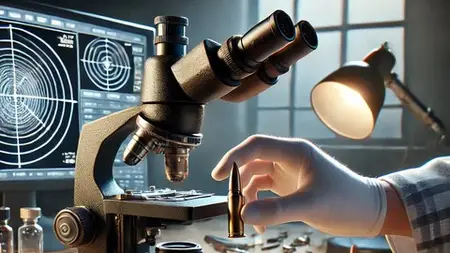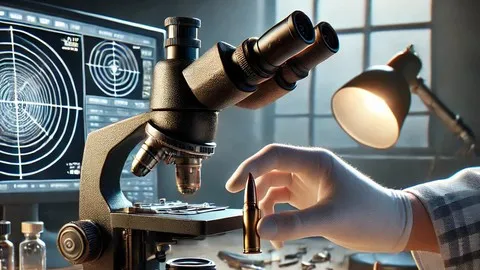Forensic Ballistics: Analyzing Firearms And Bullet Evidence
Published 11/2024
MP4 | Video: h264, 1920x1080 | Audio: AAC, 44.1 KHz
Language: English | Size: 752.13 MB | Duration: 0h 30m
Published 11/2024
MP4 | Video: h264, 1920x1080 | Audio: AAC, 44.1 KHz
Language: English | Size: 752.13 MB | Duration: 0h 30m
Firearms, Projectiles, and Crime Scene Investigations, Tracing the Bullet: Techniques in Forensic Ballistics
What you'll learn
Understand the Fundamentals of Firearm Mechanics and Ballistics
Identify and Analyze Firearm Evidence
Apply Techniques for Bullet and Cartridge Matching
Interpret Gunshot Residue (GSR) Evidence
Requirements
No experience needed. You will learn everything about it in this course.
Description
The Forensic Ballistics: Analyzing Firearms and Bullet Evidence course comprehensively introduces the scientific analysis of firearms, ammunition, and bullet-related evidence in criminal investigations. Designed for law enforcement, forensic professionals, and those in the criminal justice field, the course covers the fundamental principles of ballistics, including firearm identification, bullet examination, and the mechanics of gunshot residues. Students will learn how to analyze and interpret the markings on bullets and cartridge cases, techniques for linking firearms to specific crimes, and how forensic ballistics can help reconstruct crime scenes. Key topics include the classification and examination of firearms and comparison microscopy to match bullet evidence to specific weapons. The course also delves into gunshot residue testing, its different tests and its application in linking suspects to crimes. Students will learn about modern forensic tools and databases like the National Integrated Ballistics Information Network (NIBIN), which helps link crimes through ballistic evidence.By the end of the course, participants will have a solid understanding of forensic ballistics techniques and their application in solving violent crimes, making it an essential resource for those involved in criminal investigations and forensic analysis. Throughout the course, students gain an understanding of how forensic ballistics contributes to criminal investigations, including the importance of expert testimony in the courtroom. They will also explore the ethical considerations and legal frameworks surrounding the use of ballistics evidence in trials.
Overview
Section 1: Introduction
Lecture 1 Introduction to Forensic Ballistics
Section 2: Firearms
Lecture 2 Parts of firearms
Lecture 3 Types of firearms
Section 3: Ammunition
Lecture 4 Components of ammunition
Section 4: Crime scene
Lecture 5 Types of evidences (related to ballistics)
Section 5: Collection of ballistic evidences
Lecture 6 Collection
Section 6: Firearm examination
Lecture 7 Physical and Instrumental Examination
Section 7: Gunshot residue examination
Lecture 8 Chemical examination
Lecture 9 Instrumental examination
This course is ideal for students of forensic science, criminal justice professional and anyone interested in science of firearm analysis.



